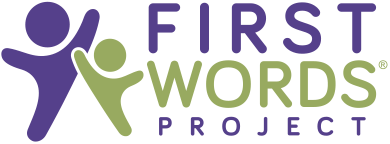Why is social communication development important?
Good communication development starts in the first year of life and goes far beyond learning how to talk. Communication development has its roots in social interaction with parents and other caregivers during everyday activities.
Your child’s growth in social communication is important for your child to connect with you, to learn language and play concepts, and to set the stage for learning to read and future success in school. Good communication skills are the best tool to prevent behavior problems and make it easier to work through moments of frustration that all infants and toddlers face.
Learning can happen in everyday activities
My Baby Navigator
When you join My Baby Navigator, you’ll have access to resources and tools that are customized for your baby’s age and grow as your baby grows to help monitor development — birth to 24 months. From Lookbooks to Growth Charts, from Monthly Check-Ins to our Social Communication CheckUp, from Printables to Web Resources — all in one place that you can access online from anywhere anytime.
Infants and toddlers learn by doing. They learn about their world and how to interact with others by exploring and participating in activities around them. Everyday activities and routines provide an incredibly rich source of learning opportunities for young children. Everyday activities can vary widely across families and cultures, but there are many common activities that families share.
Despite differences, most families spend time eating, caring for each other, doing family chores and running errands, playing, going on family outings, and learning from books or other fun activities together. When you take a close look at how your family spends time, you will find moments for learning where you least expect it.
By taking advantage of the ordinary events of everyday life, you really do make every moment count for your child’s learning. Moments in activities that you are already doing can add up to minutes and hours that support learning and development.
How to support learning and development in everyday activities
Research has identified specific supports that parents use that foster social communication development. These supports can be organized into three layers much like the layers of a cake. Like making a layer cake, it’s important to set up the first layer before adding the second and third layers. Here are a few tips for supporting your child’s social communication layer by layer.
Layer 1: create a learning moment
Find or create learning moments in your everyday activities
Learning moments are when you and your child are sharing atte-tion on a common agenda or participating in an activity together. Some activities are just for fun. Activities such as diaper changing or hand washing are necessary but may not be motivating for your child. Adding interesting materials or other supports can help make necessary activities more interesting and fun.
Offer your child a productive role and predictable steps
Roles for a young child can be as simple as holding or dropping something and within an everyday activity have an important purpose. Your child can hold a new diaper and hand it over when you’re ready for it. Your child can help wipe up the high chair tray and toss a napkin into the trash to mark being “all done” with snack. Allow your child to grab a washcloth from the closet, pick out a favorite toy, and toss them into the tub to get ready for bath time, and help turn the light out when bath is over.
Use your position to your advantage
Positioning yourself in front of your child makes it easier to watch each other and to share a common focus, such as during a social game like peek-a-boo or “I’m gonna get you” or when playing with a toy of interest. When you are close by and looking at what your child is looking at, you create a learning moment that you can enjoy together.
Talk about what your child is looking at
For infants, use very simple words about what your child is doing or paying attention to. These moments that you use words about your child’s experiences are critical for language development.
Layer 2: make it fun and keep it going
Encourage initiation
Pay attention to your child’s subtle signals like reaching toward a window, showing you a sippy cup, or making noises when the cat walks by. These are your child’s earliest attempts at sharing their ideas with you. You can also encourage initiation by stretching out natural pauses to give your child practice communicating their own ideas.
Balance your turns
Try to give your child a turn after each of your turns. Your child’s turn will be a simple action or sound at first and later will include words. Once you have an activity going, your child learns that you each take turns with your actions, sounds, and words. This back and forth volley between you and your child actually lays the groundwork for later conversation.
Make your messages clear
When you notice and respond with language, you help your child see that the two of you are exchanging ideas and information. Children often understand language before they can talk. When you use language that your child needs to listen to, like “Where’s your fork?” or “give me shoe!” with an open hand, you teach your child that paying attention to the gestures and language of others is important. When giving an instruction, say it like you mean it and try to say it only once before helping your child to follow through.
Layer 3: model, expand, and keep moving!
Model gestures, words, and actions
Once you and your child are sharing an activity and keeping turns going, you can start adding new gestures, words, and play actions. When your child notices a bird outside the window, you can model new words like “I see red bird!” or “bird go bye bye”. When playing with toys, you can show your child that the stacking rings can be tapped together to make an interesting sound, or can go on your head as a silly hat.
Extend the activity and roles
Stretching the middle of activities can give your child more turns and more new roles. With a ball, you can roll it back and forth, bounce it, or use it to knock down a tower. You can also involve your child in the transitions between activities. You can offer new roles when you say “Time for diaper. Come! Let’s find wipes”, or “give Mommy keys, time to go to the store!”.
Expect more as your child grows
When your child is happy and having fun is the best moment to expect more. Hold out for better communication. When your child is fussy, try to understand what is wrong and offer support.
Modeling new words and actions, expanding routines to include new roles and transitions, and raising expectations as your child grows will give your child a jump start on learning. Effective social communication skills will help your child be successful both at home, going out in the community and in future school environments.
Want to learn more? Subscribe!
FIRST WORDS® Project is a longitudinal research investigation in the Florida State University Autism Institute, directed by Dr. Amy Wetherby. Our goal is to identify early signs of communication delays in young children by improving screening tools and helping families support child development. Copyright © 2019 Florida State University. All rights reserved.

